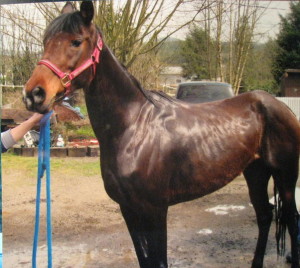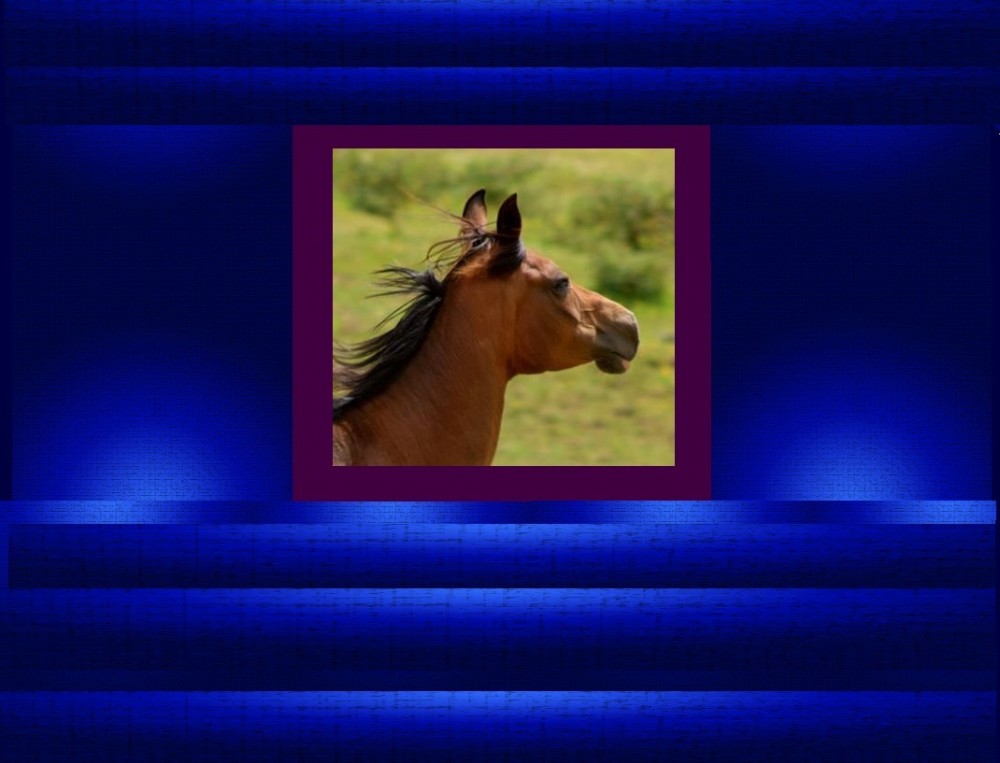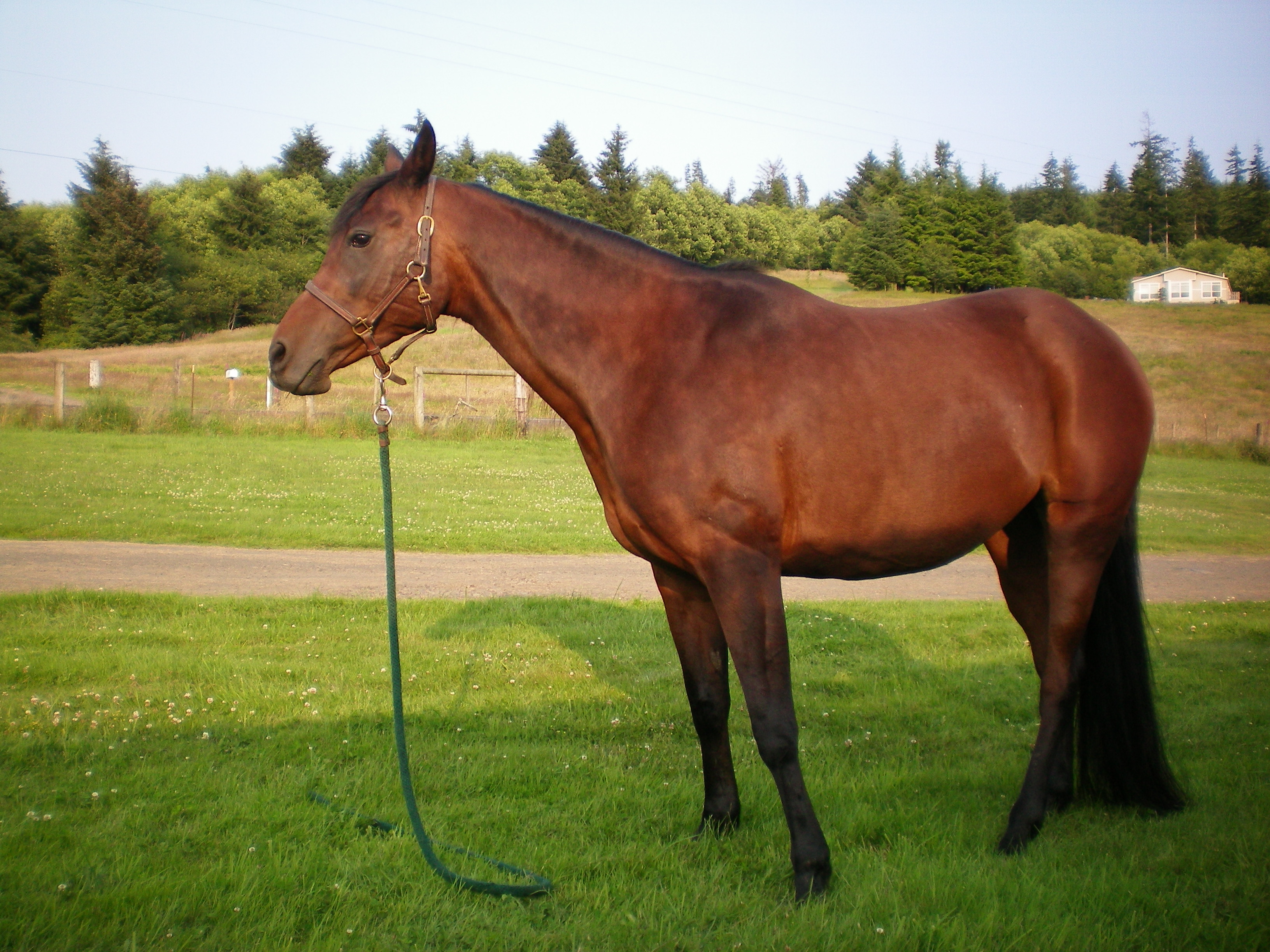There is a difference between abuse and neglect.
Neglect is different from abuse in that horses often won’t connect their poor state with humans or human handling. Neglected horses will suffer due to starvation, parasites, long hooves, painful teeth and skin diseases. Yet with some good care they will soon enjoy human company and see their new owners and handlers in a positive light.
Depending on the type of abuse, it is often more difficult to get an abused horse to trust humans again. Sometimes the horse will associate the poor handling with only men or women, or even with a certain human. But often it will be more complicated than that and the horse may have difficulty trusting that a human will not suddenly cause them pain or severe fright.
Another common issue is horses that were not technically abused or neglected, but have developed problems due to being forced into a “round pen” mold. I am not talking about natural horsemanship here, but rather the idea of making a horse conform to certain training principles that the trainer has used in the past but are not helpful for this horse.
For instance, a trainer might have used an ear twitch or ear grab to get a fidgety horse to stand and be bridled, or to lower their head. Perhaps this technique was tolerated by a few horses, so the trainer feels this method is an acceptable way to teach a horse. Now enters the “square” horse. This horse is probably very sensitive or high energy, and instead of giving in to the ear pressure the horse may panic, rear, throw his head into the handler, or otherwise react badly.
A good horseman at this point will understand that this was absolutely the wrong approach for this particular horse. Chances are good that if the issue is dropped and another completely different method is begun, the horse will maybe toss his head a time or two when his ear is approached but can quickly be convinced that the ear grab was a one time mistake and he won’t develop a major issue around it.
More commonly, the trainer will feel that the horse has disrespected him by reacting poorly to his method. Instead of dropping the issue, he will force the issue. The horse will decide he must never allow his ears to be touched or bad things will happen. Now you will often have this develop into a chronic problem and a horse that is difficult to put head gear on. The poor horse will often be passed from owner to owner due to what has now become a serious problem.
Some big name trainers (Clinton Anderson, Buck Brannaman in particular) say that an abused horse should be treated the same as any other horse, and that making excuses for the abused horse’s behaviors will only limit his training. In a way this is true; you can’t simply overlook bad behavior and excuse it. You also should act as confident and matter-of-fact when handling a horse with bad behavior as when you handle a well-behaved horse.
It is also true that people might assume horses have been abused due to their behaviors, when actually they have never been mistreated. A case in point; it is unlikely that my mare, Amore has ever been struck with a solid object by anyone handling her. However, if you pick up a pitchfork and move it quickly toward her, she will cower, spook or run away. One person told me this was a sign she had been abused, yet her only other owner was her breeder and she was handled very little for the first ten years of her life. This mare is simply reactive toward any article that moves quickly at her, whether a bird or cat or leaf blowing in the wind. There would be no reason to treat her any differently based on this supposed abuse.
However, even though horses and other animals live in the present, they do have excellent memories. My mare Valhalla had been trained by a professional trainer in her younger years. She had been turned out for many years and rarely handled otherwise before I saved her from a neglectful home at age 13. When I first reintroduced her to a saddle, she grew agitated at the sight of it, moving from side to side, pinning her ears and baring her teeth. From this I knew she’d had some previous bad experience from saddling. It quickly became apparent that her source of agitation was from cinching. She accepted the saddle onto her back, but as soon as the cinch touched her belly the previous signs she’d shown of distress about saddling became even more pronounced.
Even though I wanted my mare to learn to be saddled again by slowly reintroducing each step and demonstrating that there would be no pain, no force and no fright involved, it would be foolish to not understand how deeply rooted this mare’s aversion to cinching was. Since I didn’t know what she’d been through, it would have been wrong of me to punish her for communicating her dislike of the process.
Some trainers say that if you just treat the abused horse “normal,” they will “quickly” become like any other horse. I would say they are painting quite a rosy picture that is rarely seen in real life with square type horses. A horse with a phobia will only improve their behavior after the anxiety goes away. The anxiety can only be cured by many, many good experiences with no recurrence of a bad or painful one. Abused horses can’t stop the chemicals that flood their system signaling “danger,” anymore than a human can stop a panic attack from post traumatic stress. The brain and body have to be reconditioned into believing a situation that was previously assessed as unsafe is now safe. This process can take months even years. The good news is that the horse may go from panic to merely suspicious of a situation much more rapidly, but it is going to take a long time before they act like a horse that has never had a bad experience in their life.
Whether your horse’s behaviors come from a complete lack of experience, abuse or simply attempts at training from inflexible trainers, what is important is that you approach the horse with a realistic goal of how you would like them to behave and work toward that. You must accept where they are at right now, and also realize that each small improvement is a step in the right direction. Be calm and non-reactive yourself, and these horses will learn to appreciate your presence and look to you for leadership.
Valhalla, a formerly abused and neglected horse
Valhalla, healthy and happy

